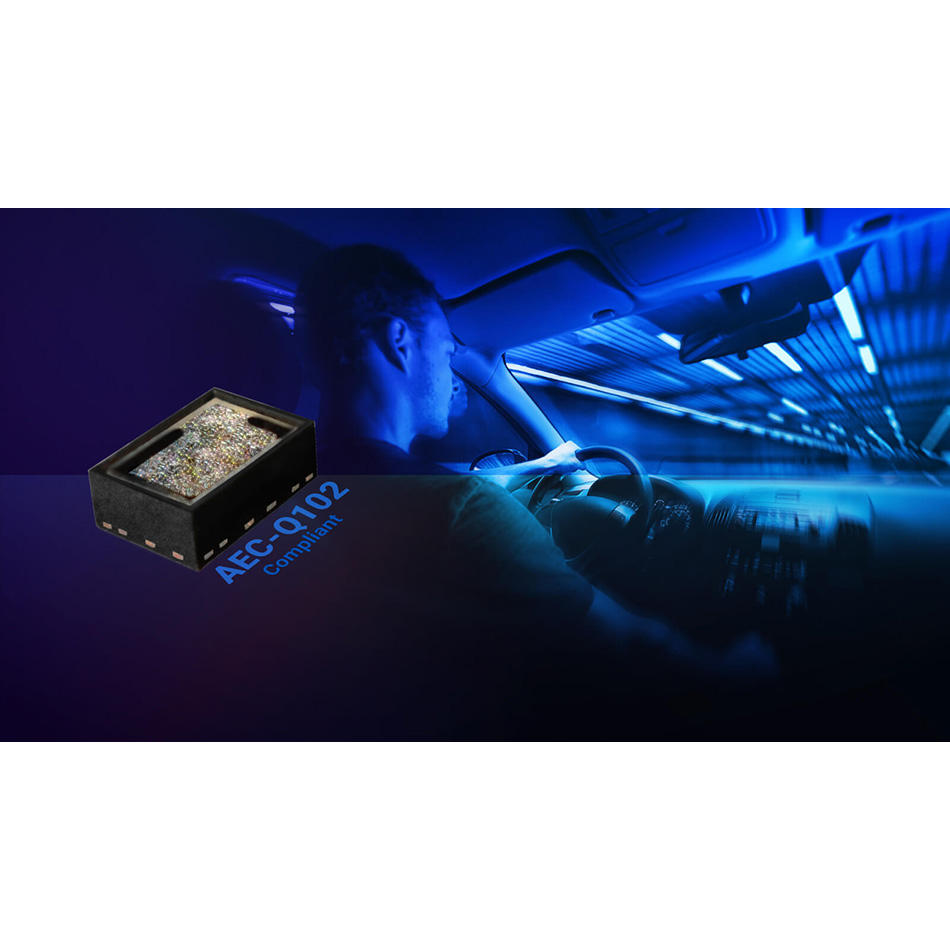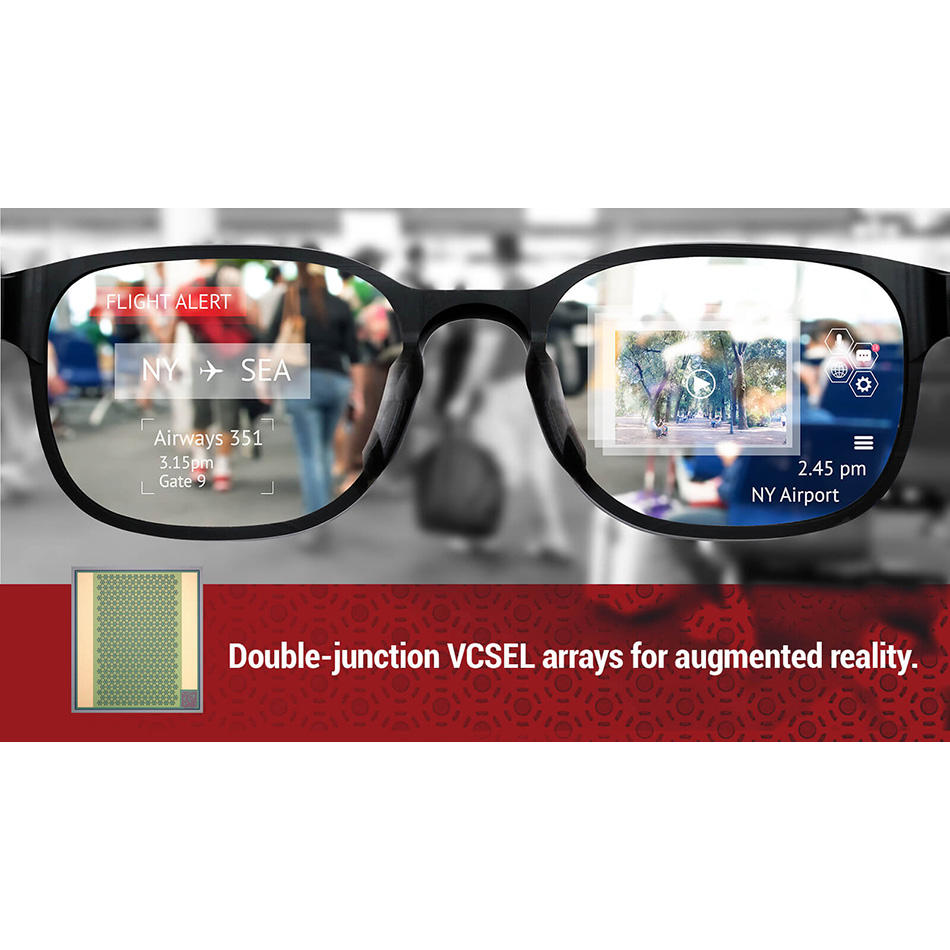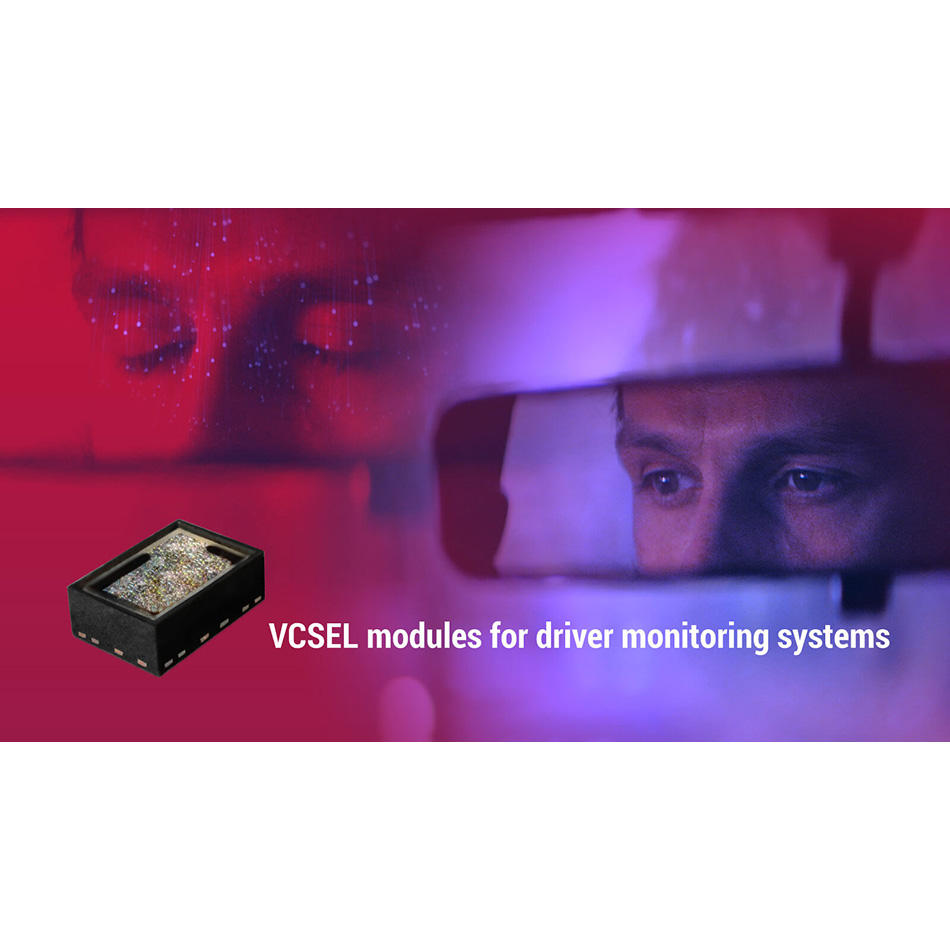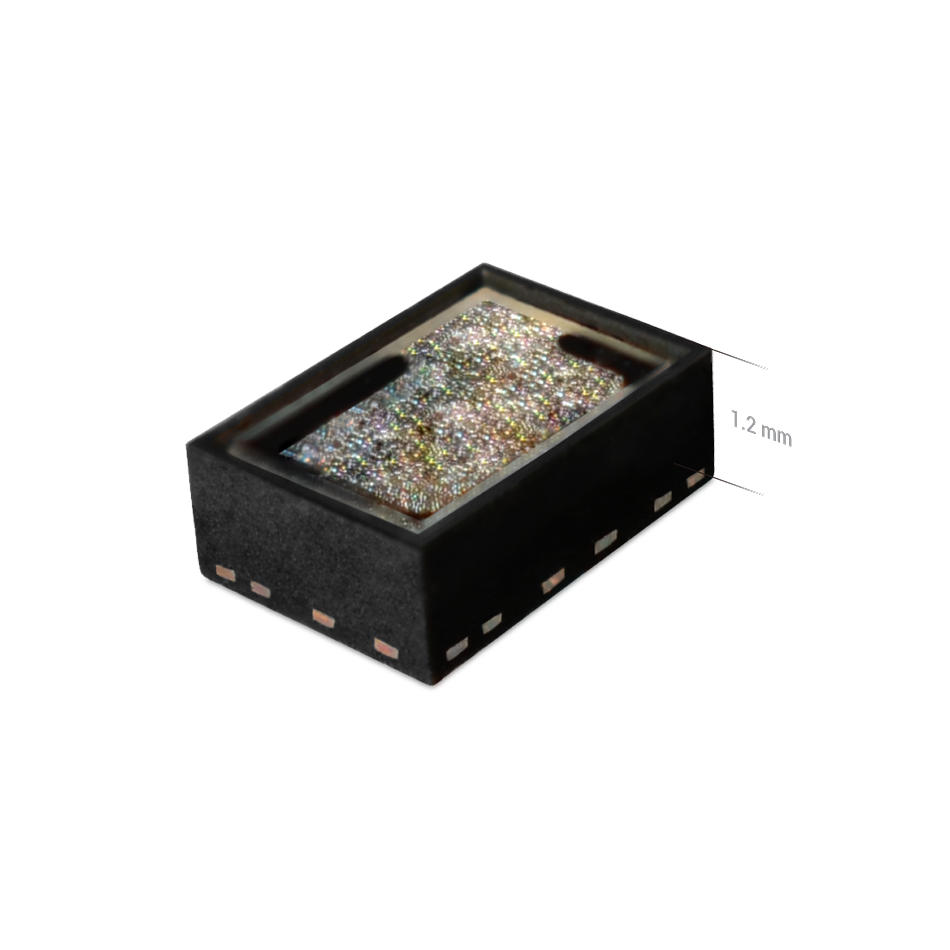Bright Ideas for Improved ADAS
VCSEL illuminators deliver higher efficiency and improved performance for in-cabin vehicle monitoring systems.
February 22, 2024 by Coherent

Your car is watching you. That’s not paranoia or science fiction. It’s a crucial part of the Advanced Driver-Assistance Systems (ADAS) revolution. ADAS technologies, designed to enhance vehicle safety and driving efficiency, monitor conditions both inside and outside the vehicle to proactively prevent accidents and ensure optimal comfort.
Inside the vehicle, Driver Monitoring Systems (DMS) and Occupant Monitoring Systems (OMS) are key components of an ADAS. These watchful eyes ensure safety and comfort by observing the state and behavior of drivers and passengers alike. Through DMS and OMS, distractions, driver fatigue, and even the presence of unattended children or pets can be detected, playing a vital role in the ADAS objective of reducing road accidents. They can also be used to enhance the user experience by enabling features such as gestural control and facial recognition for driver authentication.
DMS and OMS are essentially advanced machine vision systems, and their effectiveness is highly dependent upon the illumination technology used. Traditionally, light-emitting diode (LED) illuminators have provided the necessary light for cameras and sensors.
But as ADAS technology advances, designers strive to make their DMS and OMS components more efficient and reliable. In particular, they want to improve their ability to operate in challenging light conditions and over wide temperature ranges. They also want to enhance system functionality, for instance by including 3D sensing capabilities. All this has led to the exploration of Vertical-Cavity Surface-Emitting Lasers (VCSELs) as light sources.
Offering a myriad of advantages over LEDs, from improved depth perception to minimal ‘red glow’ disturbances, VCSELs are poised to transform these critical components of ADAS. Here we’ll explore the integral role of illumination in DMS and OMS, examine the limitations of LED technology, and discuss the transformative potential of VCSELs in enhancing the function of ADAS in automotive safety.
Monitoring System Basics
DMS and OMS are largely similar in terms of their overall configurations. They use a near-infrared light source to illuminate a region of interest, cameras, and sensors to image the scene, and then various processing hardware and software to interpret what is being viewed. Near-infrared illumination is preferred because it is invisible to the eye, so it doesn’t distract the driver or impair visibility but is still easily detected using inexpensive sensors.
However, the DMS and OMS do differ in their particulars. A primary function of the DMS is to monitor the driver’s behavior and state of alertness. Thus, the DMS typically only illuminates and views the limited area within the vehicle where the driver is expected to be. The DMS might return data on driver eye movement, head position, and even physiological indicators like heart rate. This enables it to detect and alert drivers to potentially dangerous behaviors such as distraction or drowsiness, significantly reducing the risk of accidents.
OMS extends this monitoring to all passengers in the vehicle. These systems assess the presence, size, and position of each occupant, optimizing safety features like airbag deployment in the event of a collision. They are particularly vital for detecting vulnerable passengers like children or pets.
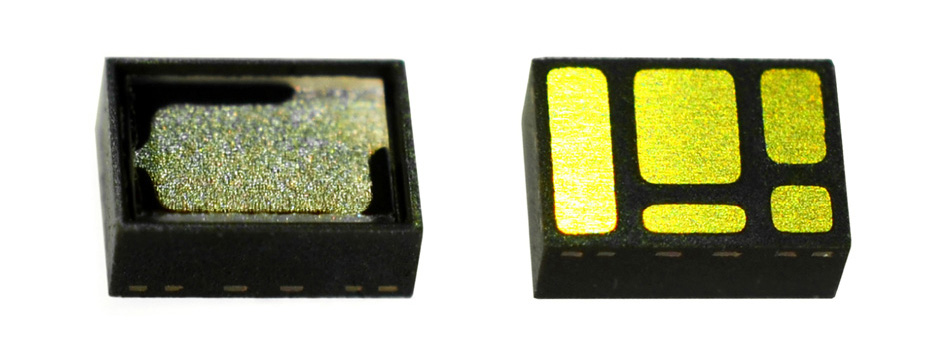
Coherent manufactures an extensive range of VCSEL array products for 3D sensing tasks that require a large field of illumination, including driving monitoring systems (DMS), occupancy monitoring systems (OMS), and gesture recognition.
Illuminating Concepts
Near-infrared LED illuminators have been the mainstay of in-cabin monitoring systems for several reasons. First, they’re a widely available, well-understood, and proven technology. They’re also cost-effective compared to other lighting technologies. LEDs are energy efficient, which is particularly important in automotive applications – especially electric vehicles (EVs). And they’re compact, durable, reliable, and long-lived.
Despite these advantages, LEDs also have limitations. Furthermore, these drawbacks become more pronounced as DMS and OMS evolves.
One key problem with LEDs is their so-called ‘red glow.’ An LED puts out a relatively broad spectrum of light. So, even though its peak output might be at 940 nm in the invisible infrared, it still can emit some visible red light. The red glow can be visually disturbing or distracting to the driver, especially in nighttime or other low-light conditions. It can be aesthetically undesirable, as well.
Like most laser sources, the VCSEL produces nearly monochromatic output. A 940 nm VCSEL produces virtually no visible light. There’s no red glow.
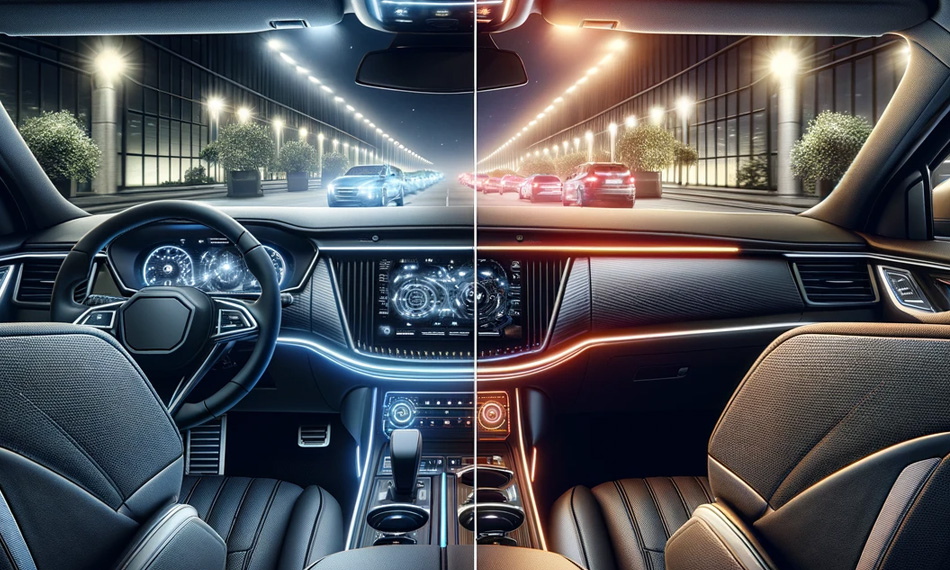
The spectrally narrow output of the VCSELs gives them another advantage over LEDs. Specifically, it’s much easier to pair a VCSEL with an optical ‘bandpass filter’ to eliminate ambient light (both sunlight and artificial sources) from the scene. Ambient light can introduce noise and errors in the monitoring systems, leading to false readings or reduced accuracy.
The bandpass filter is an optic component placed in the camera system that only transmits a certain range of wavelengths. When used with a VCSEL, the bandpass filter can reject virtually everything but a very small range around the peak emission wavelength. This enables proper operation even in the presence of very bright ambient light (like direct sunlight). In contrast, a much broader bandpass filter must be used with an LED in order to pass all its light. But, this also allows through more unwanted ambient light.
VCSELs also maintain more consistent wavelength and output power when exposed to temperature changes than do LEDs. This stability is crucial in automotive applications because it means the systems will provide consistent results even when exposed to a wide range of temperatures. Plus, the wavelength stability of the VCSEL with changing temperatures further enhances the ability to use it with a narrow bandpass filter. Otherwise, the VCSEL output could conceivably shift outside of the filter’s passband, thus lowering system efficiency.
VCSELs possess another key characteristic of laser sources. Namely, they appear to be a very small source that outputs over a relatively narrow angular range. In contrast, LEDs essentially radiate over an entire hemisphere. Any scheme that attempts to narrow their output simply ends up throwing light away.
This makes it easy to match the angular output of the VCSEL to the field-of-view of the camera system. In other words, the VCSEL only lights up the desired area, and does so without any light loss. This provides a substantial efficiency boost over the LED which typically will require much more power to achieve the same effective illumination level on the sensor.
Another characteristic of VCSELs will enable DMS and OMS to move well beyond the capabilities of present-day systems based on LEDs. Specifically, this is the ability to modulate (pulse) the output of VCSELs at very high speeds (over 50 MHz). LEDs can’t get anywhere near this.
The benefit of this fast pulsing is that it can be used for 3D sensing. This can be accomplished with either direct time-of-flight (dToF) or indirect time-of-flight (iToF) techniques. The dToF method simply measures the time it takes the VCSEL pulse to bounce off an object and return to the sensor. The time measurement is used to calculate the distance to the object. In iToF, the system uses the phase shift of the reflected light wave to determine distance. This latest approach can be more effective where factors like ambient light interference or the need for rapid distance calculations make the dToF method more challenging or less accurate.
Coherent believes that a shift from LEDs to VCSELs in DMS and OMS will improve system efficiency and performance. And, more importantly, that it can significantly upgrade the capabilities of these components. We are already one of the world’s top producers of VCSELs for a variety of applications, with a strong emphasis on high power, reliability, and efficiency. Plus, our vertical integration uniquely positions us to fabricate and package AEC-Q102 compliant VCSELs and illumination modules that enable ADAS designers to derive the full benefits of this technology.
Learn more about Coherent VCSEL products and capabilities.
